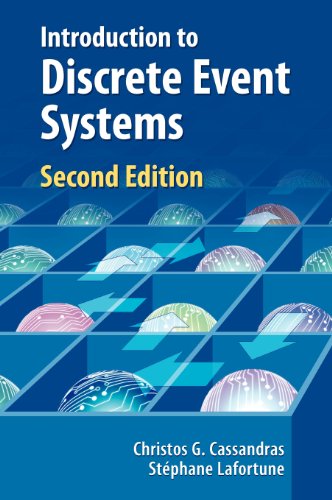Introduction to Discrete Event Systems book download
Par scott anthony le samedi, janvier 28 2017, 00:56 - Lien permanent
Introduction to Discrete Event Systems. Christos G. Cassandras, Stephane Lafortune

Introduction.to.Discrete.Event.Systems.pdf
ISBN: 0387333320,9780387333328 | 781 pages | 20 Mb

Introduction to Discrete Event Systems Christos G. Cassandras, Stephane Lafortune
Publisher: Springer
E-LETTER on Systems, Control, and Signal ProcessingIssue 282March 2012 Editor:Magnus EgerstedtSchool of Electrical and Computer Engineering ,科学网. Keywords: Business process simulation, discrete event simulation, business process change, business process modelling tools, guidelines for the evaluation of business process simulation tools. The relation between these DHCP, DNS with the Discrete Event Systems (DESs) is the events involved in this process are discrete and the state changes i.e., the request state and response state. Examples of discrete-event systems are facilities such as a bank, a tollbooth, a supermarket, or a hospital emergency room, where customers arrive and are then serviced in some way. This is because during the first several population doublings, the system is discrete (low integer numbers of cells) and unmodelled environmental variability and cell-to-cell heterogeneity are likely to cause strongly stochastic Introduction to the logistic model To carry out discrete event simulation of the logistic model, we need to be able to write down the hazard function for the probability that a cell divides in an infinitesimally small window of time about time $t$. 1.4 First Look at Discrete-Time Systems, 13. The aim of this book is to give an introduction to the agent-based modelling approach. Chapters 3 and 4 introduce continuous-time and discrete -time minimum-variance filtering. 1.4.1 Inherently Discrete-Time Systems, 17 .. Workshops 6.1 International Workshop on Discrete Event Systems 6.2 ACC2012 Workshop on Control of Power Inverters .. 5.7 Automation & Control for Energy Conference 6. It will introduce a new paradigm of language measure to quantitatively compare the performance of different automata models of a physical system. 1.2 Derivation of a Mathematical Model, 4. Integrating simulation in numerous and diverse courses – CAPSIM (Simulation in Strategy), SAS (Financial Engineering, Business Analytics and Market Research); SAP (Enterprise Resource Planning); Arena (Discrete Event Simulation) and iThink (Modelling of Continuous Systems). Why was the project started: To improve conceptual Modelling and data-based decision making is introduced in several (not a handful) courses.